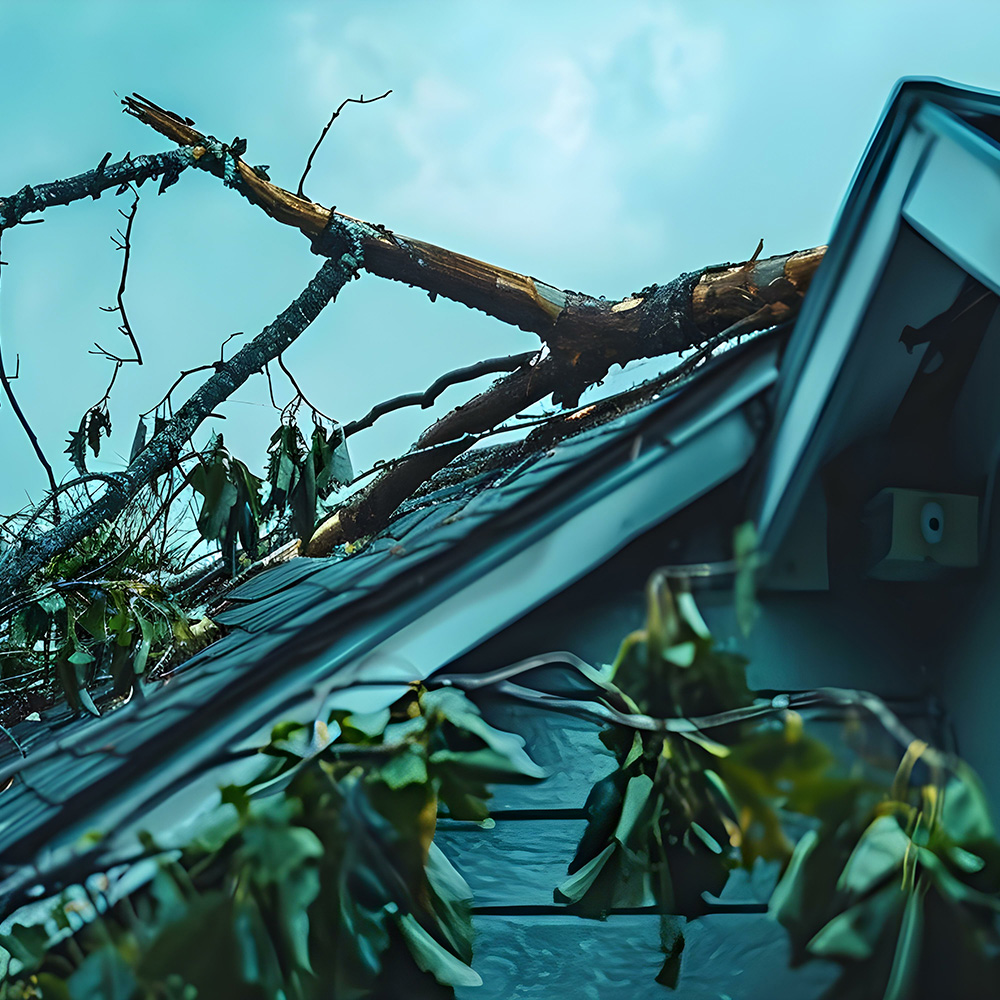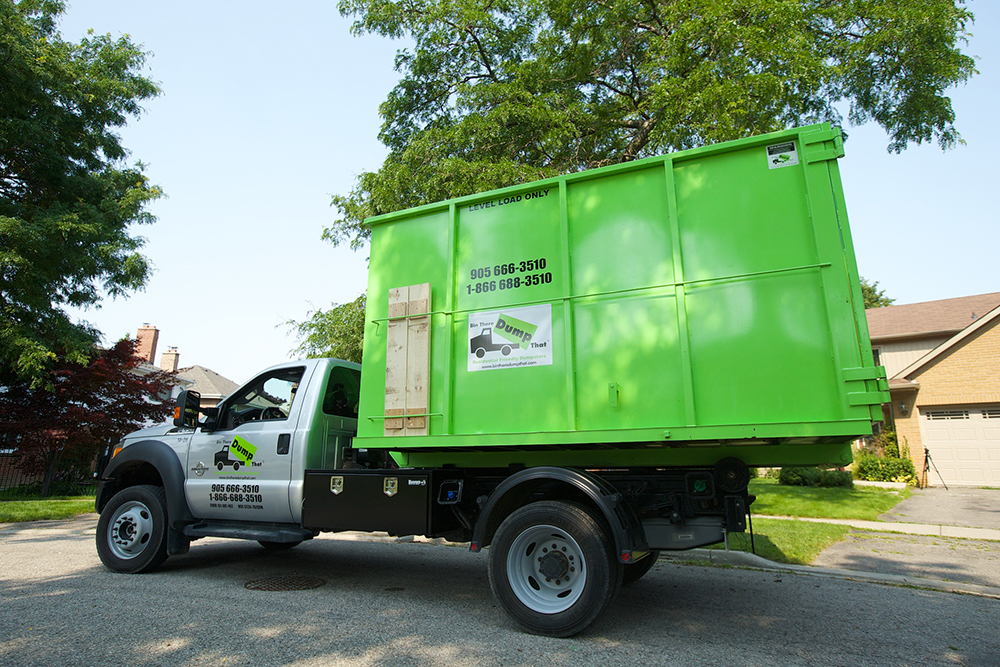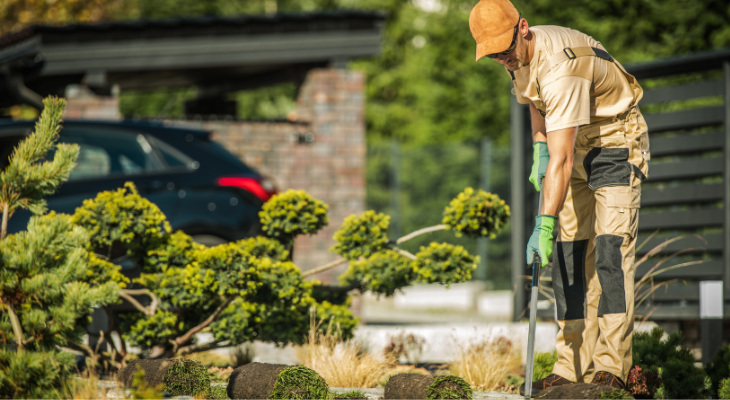From harsh wind shears to needing to get more sunlight to your lawn, there are many reasons for a tree to fall, but removing the debris can be challenging. Just the limbs can take hours of chainsaw work, and then you still need to put through a chipper, load it into a dumpster, or wait for a relative to come and pick it up for the winter.
For homeowners interested in handling the cleanup themselves, DIY methods can be a practical approach for removing yard debris. When attempting DIY tree debris removal, it’s important to have the proper tools to ensure both safety and efficiency.
If you are stuck in this situation, check out some of the top ways to remove fallen or trimmed tree debris below. Consider your options carefully to make an informed decision about which removal method best suits your needs.
Smart Solutions for Tree Debris Removal
Tree debris is a common challenge for homeowners, especially after severe weather events. Fallen trees, scattered tree branches, and other debris can quickly turn a tidy yard into a cluttered mess, posing safety risks and detracting from your property’s curb appeal.
Effective tree debris removal is essential not only for maintaining the look of your yard but also for ensuring the safety of your family and neighbors. Whether you’re dealing with a single fallen tree or a yard full of branches and other debris, it’s important to understand your options for tree debris disposal.
Professional tree service providers can assist with everything from removing large fallen trees to clearing away smaller tree branches and other debris, helping you restore your property quickly and safely. These tree services often bundle debris removal as part of their packages, providing you with a complete solution.
For homeowners who prefer a hands-on approach, DIY tree debris removal may be a viable option, especially when dealing with smaller debris or a limited area. However, for tougher tasks such as removing stumps, renting or hiring professionals with access to stump grinders can make the process faster and more efficient. No matter the size of the job, taking care of tree debris promptly helps keep your yard safe, clean, and visually appealing.
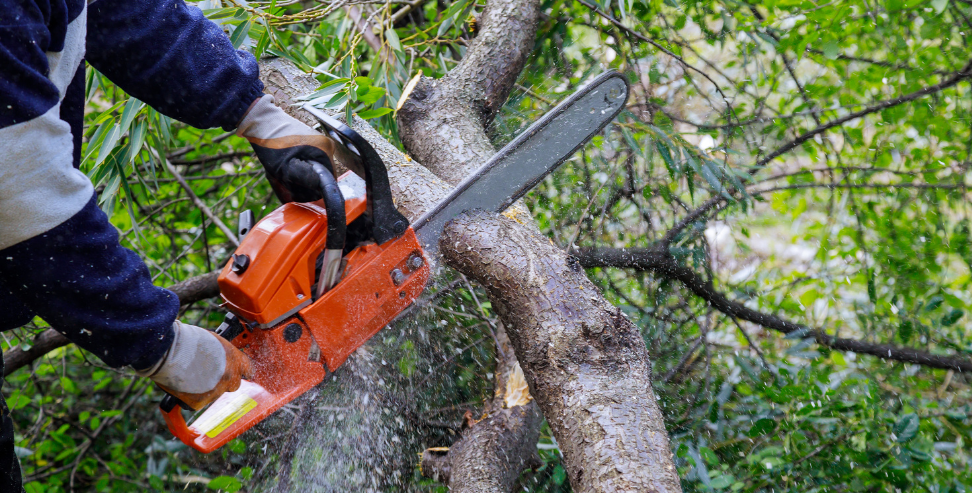
Assessing the Damage
After a storm or high winds, the first step in the cleanup process is to assess the extent of the tree debris on your property. Walk through your yard and take note of any downed trees, fallen tree branches, and other debris that may have landed on the ground or nearby structures.
Pay special attention to leaning trees, as they can be unstable and pose a risk of falling. Also, check for downed power lines, which are extremely dangerous and require immediate attention from utility professionals.
By carefully evaluating the size and location of the debris, you can determine whether the job is manageable on your own or if it’s time to call in a professional tree service.
This assessment will help you plan your debris removal strategy and ensure that you address any hazards before starting the cleanup.
Safety Precautions
When it comes to tree debris removal, safety should always come first. Before you begin, make sure to wear safety gear such as gloves, safety glasses, and a hard hat to protect yourself from sharp branches and falling debris.
If you encounter downed power lines, keep a safe distance and contact your local utility company immediately—never attempt to move or touch power lines yourself. When using equipment like a wood chipper or chainsaw, follow all manufacturer instructions and safety guidelines to prevent accidents.
If the debris removal task involves large trees or heavy branches, or if you’re unsure about the safety of the job, it’s wise to hire a professional tree service. Certified professionals have the training, experience, and equipment needed to handle tree debris removal safely and efficiently, reducing the risk of injury or property damage.
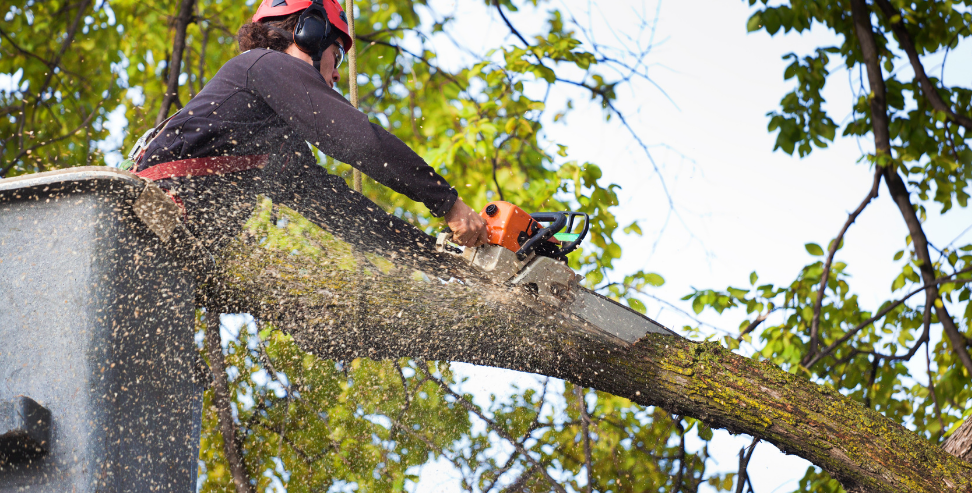
Tools to Help With DIY Tree Service
Before you begin your own DIY tree service or debris removal, gather essential tools. You’ll need a chainsaw, hand saw, loppers, and possibly a wheelbarrow or tarp to move heavy tree branches and debris across your yard. For larger trunks, renting specialized equipment like a stump grinder or splitter can save you time and energy.
Make sure all your equipment is in good working order before you start your debris removal project. Dull blades or malfunctioning machines can cause delays, hazards, and additional stress during cleanup. Remember, even for DIY jobs, sometimes calling in a local tree service to help with complex tasks like stump grinding or large tree removal can prevent costly mistakes.
Tree Limb, Trunk, and Stump Disposal Options
As mentioned above, removing a fallen tree from your property requires quite a bit of work and planning. You’ll need to manage various types of yard debris, including large tree branches, larger branches, small branches, smaller debris, and tree limbs, all of which can accumulate quickly after tree removal or when you remove fallen trees.
Stumps left behind present their own challenges, as stump removal often requires specialized methods such as using a grinder to grind them down or burning, and can be difficult to handle without professional help.
The sheer volume of debris, including stumps and branches, can be overwhelming, and getting rid of or disposing of this material—whether through landfill, recycling, or composting—requires careful planning and compliance with local laws.
Waste removal services or professional tree services, especially those provided by certified arborists, are recommended for large or hazardous jobs to ensure the job is done safely and efficiently. Ensuring safety and job safely are critical, particularly during cleanup efforts after storms, to prevent accidents and further property damage.
While DIY approaches to getting rid of yard debris can save money, it’s important to recognize when professional help is needed. Prompt removal of debris is also important, as piles of yard debris can attract small mammals and other pests if left unattended.
Add into that any property damage waste, like broken fencing or roofing materials if hit on the way down, and you’ll quickly discover that a burn pile or bagging won’t be sufficient.
Disposal Considerations
Proper tree debris disposal is a crucial part of the cleanup process. Before you start hauling debris away, consider the disposal methods available in your area.
Many communities have specific guidelines for tree debris disposal, so it’s important to check with your local authorities to ensure you’re following the rules. Some areas offer yard waste collection or designated drop-off sites for tree debris, while others may require you to take debris to a landfill or recycling center.
Eco-friendly disposal methods, such as composting or mulching, can help reduce waste and benefit your garden. By choosing the right disposal method and following local regulations, you can prevent further damage to your property and the environment while keeping your yard clean and safe.
Benefits of Hiring a Professional Tree Service
Hiring a professional tree service not only saves you time but ensures debris removal is handled thoroughly. These experts bring special tools, like stump grinders and large-capacity trucks, making light work of even the heaviest tree branches and trunks. They also follow strict safety protocols, minimizing risks to your property and family.
Additionally, many tree services offer routine maintenance packages, which can help prevent future storm damage by trimming weak branches or diseased trees before they become hazards. If you want eace of mind and a cleaner yard without the hassle, a tree service may be the best investment for your property.
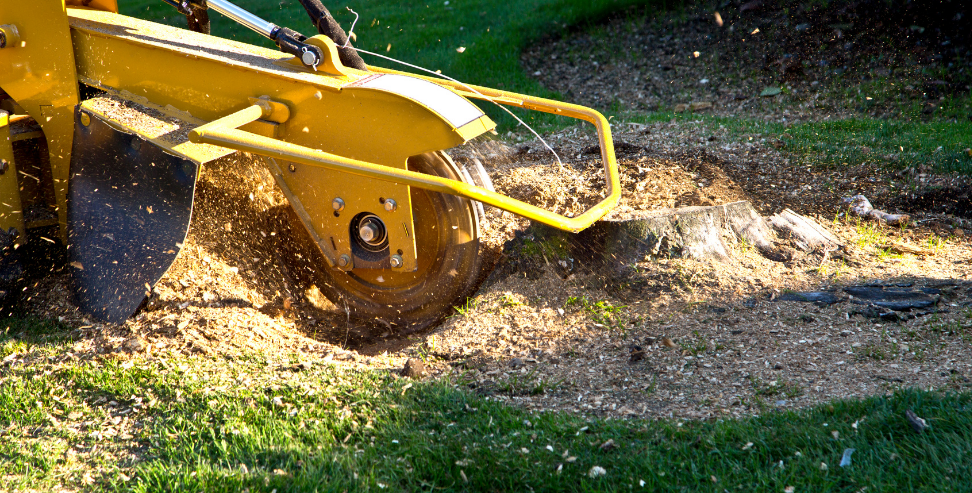
Chip It Up
Chipping or grinding up a felled tree is a great way to not only remove the mess but upcycle your landscaping. Free mulch, right?
You can use a chipper or grinder to process yard debris such as stumps, small branches, and smaller debris, making disposal and reuse much easier. The trick is the volume you will end up with after going through the hassle of renting a chipper or grinder and doing it yourself or hiring a company to come and handle it for you.
If you have excess wood material leftover after beautifying your yard, you’re going to need to give it away, sell it off, or store it until you need to use more.
Pay a Service to Haul It Away
Many homeowners choose to hire professional services or seek professional help for debris removal because it is less labor-intensive than other options. Certified arborists are available for complex or hazardous jobs, ensuring the highest level of expertise and care.
These services typically include waste removal and comprehensive cleanup efforts, making the process efficient and thorough. While it may be more costly, it is often worth it for the convenience and peace of mind.
Be aware that additional fees may apply for certain types of debris or extra services, so discuss these in advance to avoid surprises. Hiring professionals ensures the job is done safely, prioritizing ensuring safety for your property and family.
Make a Burn Pile for Tree Debris
This tree debris removal approach is also popular but has several considerations to keep in mind before piling up all that wood and setting a match to it. Burning is sometimes used for stump removal, where stumps are burned to help with getting rid of them after tree removal or storm damage.
However, always check local laws before burning any debris, as regulations may restrict or prohibit this method. Safety is the number one issue with this method. Is the designated burn zone away from areas that can easily catch fire? Are the weather and environment conducive for the flames to get out of control?
Are burn piles legal in your neighborhood? Are there fire hydrants nearby in case the burn gets out of control? After burning, thorough cleanup efforts are necessary to ensure all debris and ash are properly managed. These are critical questions to answer before burning away tree debris.
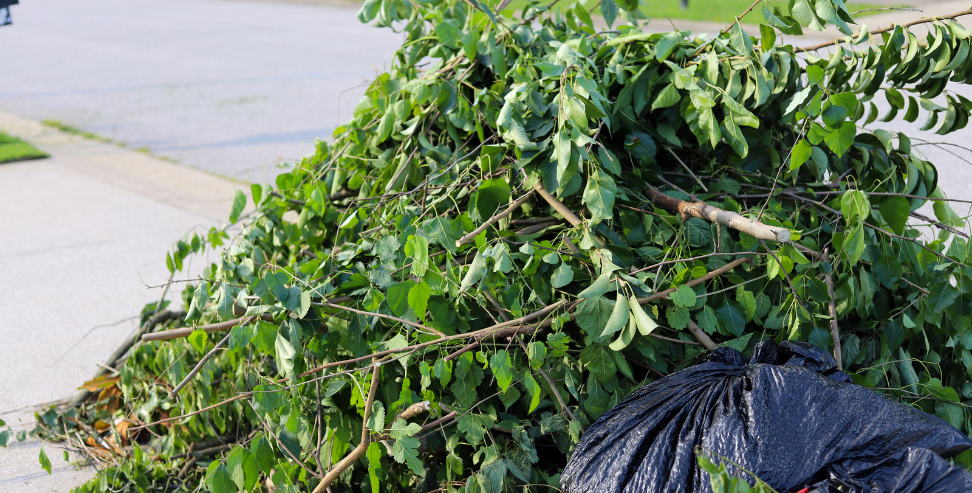
Use a Dumpster for Convenient Haul Away
For homeowners who can’t afford a tree trimming service for tree removal or don’t have anyone interested in hauling out free firewood, a Residential Friendly dumpster is a perfect option for waste removal and getting rid of yard debris, such as fallen trees and tree limbs.
While cutting up the stump, trunk, and limbs will still take a bit of work, the manageable piece size makes it a cinch to just toss into the bin.
Be sure to select the appropriate dumpster size for your debris volume to ensure efficient disposal and avoid overfilling. Including non-allowable waste, such as soil or dirt, may result in additional fees, so discuss these details in advance to avoid surprises and make an informed decision when choosing your dumpster rental.
Bin There Dump That offers roll-offs that can hold large capacities of natural waste like brush, dirt, and wood. All of our dumpsters have doors that easily swing open to allow easy, ergonomic access for disposal efforts, so the risk of injuring yourself while working is reduced.
Schedule a Dumpster Rental for Your Fallen Tree Trimmings
Costly tree jobs need affordable waste management solutions that are hassle-free and convenient. You can rely on Bin There Dump That for tremendous service when you need to rent a dumpster to handle your yard debris and waste removal needs. Not only do we deliver quickly, but we protect your driveway from damage and sweep up after hauling out your debris as part of our thorough cleanup efforts. Our double-door roll-off design makes disposal ergonomic, and the range of dumpster sizes we offer ensures you can select the right fit for your specific yard debris volume.
